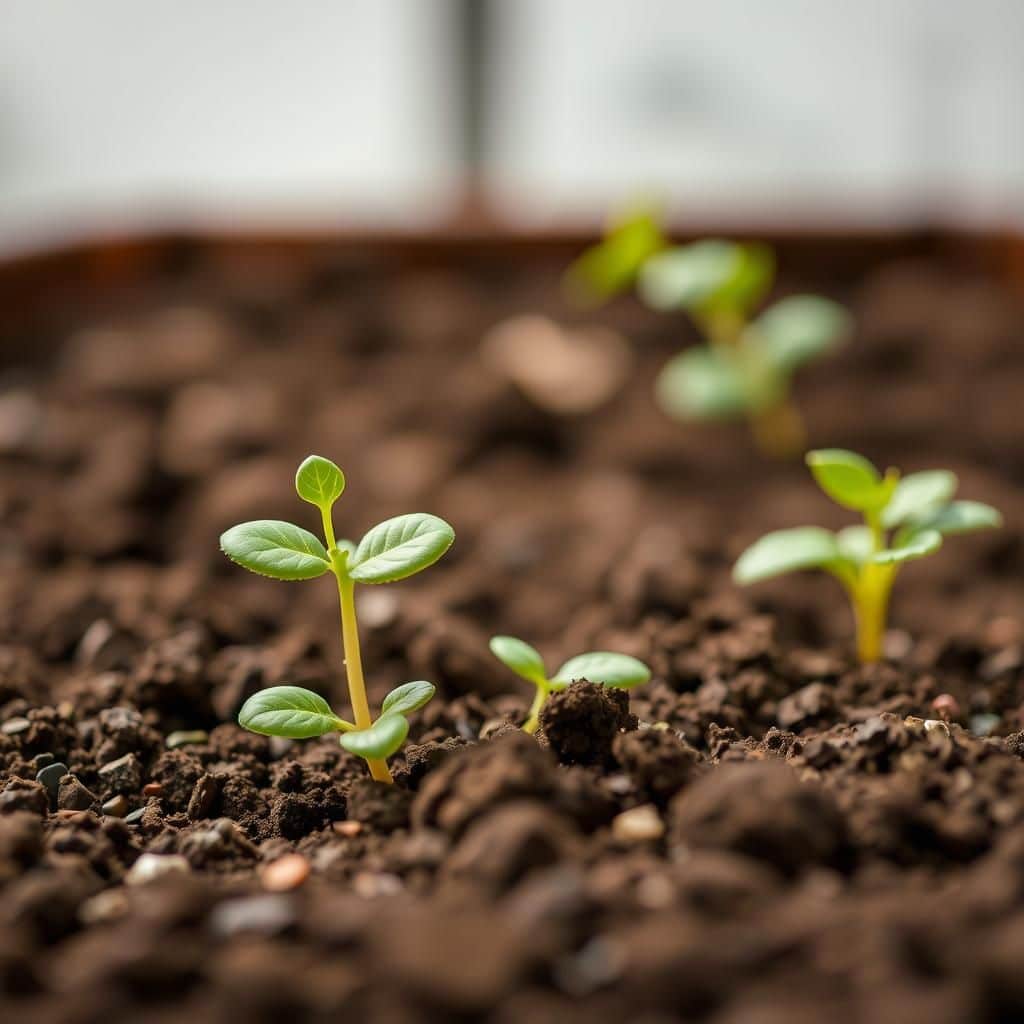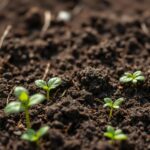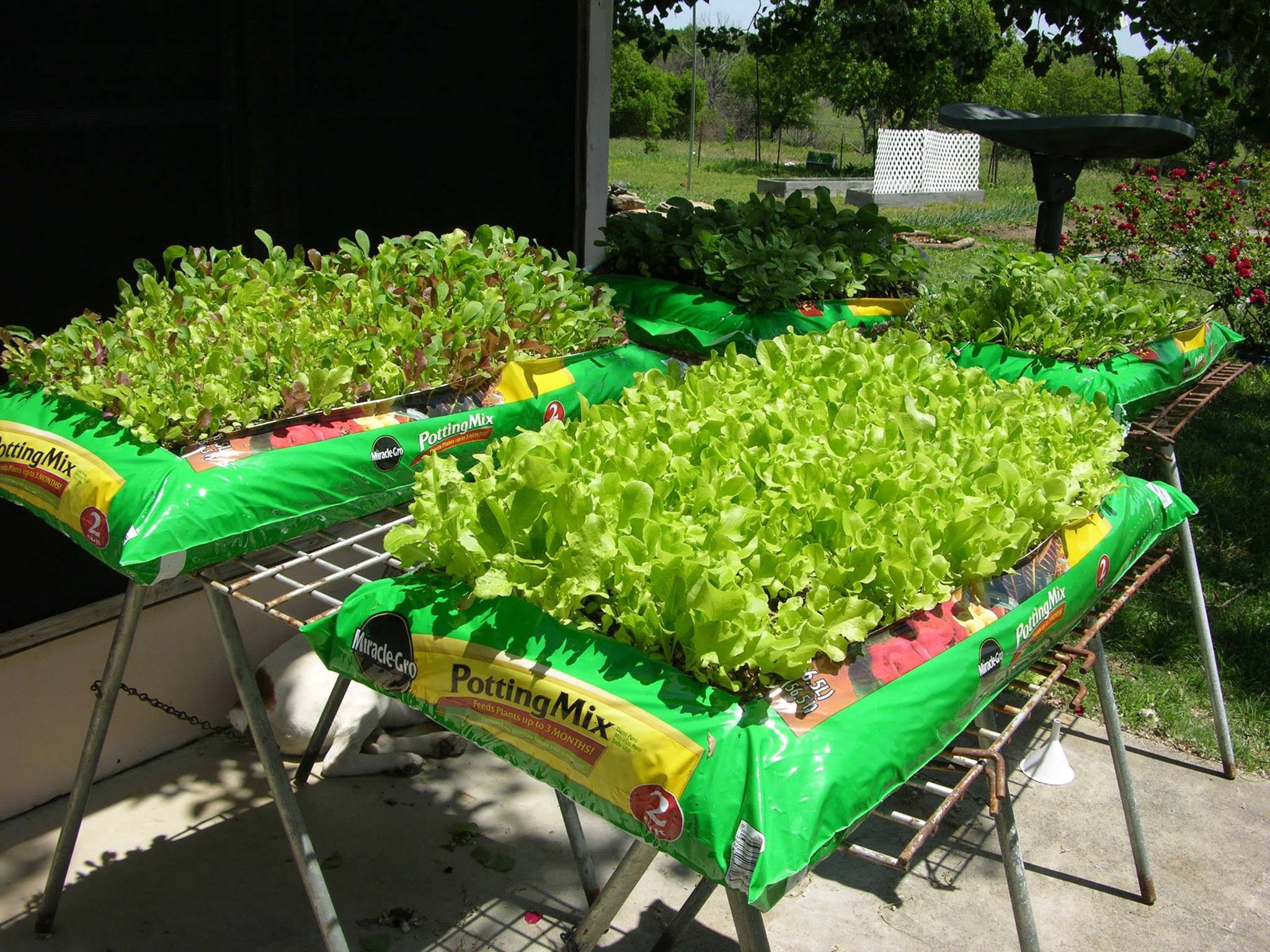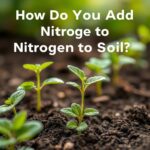What's the Difference Between Potting Soil and Soil Mix? A Comprehensive Guide

When it comes to gardening, understanding the differences between potting soil and soil mix is essential for optimal plant growth. Both materials play crucial roles in providing the right environment for your plants, but they serve distinct purposes and have different compositions. Potting soil is specifically formulated for container gardening, while soil mix can refer to a blend of various soil types for use in garden beds or raised planters. This comprehensive guide will explore the key differences, benefits, and ideal uses for each type, helping you make informed choices for your gardening projects and ensuring your plants thrive.
What’s the Difference Between Potting Soil and Soil Mix?
Potting soil and soil mix are often used interchangeably, but they are distinct in their composition and intended uses. Potting soil is specifically formulated for container gardening, typically containing a blend of organic materials such as peat moss, bark, and compost, which provides excellent drainage and aeration for plant roots. In contrast, soil mix might refer to any blend of topsoil, compost, and other components that aim to enhance the quality of garden beds or outdoor soil. While potting soil is tailored for potted plants, soil mixes can be utilized in various landscaping applications; therefore, understanding the differences is crucial for optimizing plant health and growth in different environments.
Composition of Potting Soil
Potting soil is usually comprised of organic materials like peat moss, perlite, and vermiculite, which are designed to provide optimal drainage and aeration for potted plants. These components ensure that plants receive the necessary nutrients, air, and moisture, preventing root rot and supporting healthy growth. Additionally, commercial potting soils often contain added fertilizers to enhance the initial nutrient content, which is essential for plants that are confined to a pot.
Composition of Soil Mix
Soil mix can include a variety of components, including topsoil, compost, and other organic matter, which are blended to improve the fertility and structure of existing soil. Unlike potting soil, soil mix may retain more moisture and is suitable for outdoor gardening where drainage properties can vary. The mixture is often tailored to specific plant types or garden needs, so it can vary significantly in composition depending on its application.
Intended Use of Potting Soil
Potting soil is primarily designed for container plants, including houseplants, flowers, and small shrubs. It is created to meet the unique needs of potted plants, where root confinement requires specific drainage and aeration properties. Its lightweight nature makes it ideal for containers, allowing for better root expansion and access to nutrients. The pH levels and nutrient balance are also typically optimized for container gardening, further differentiating it from soil mixes.
Intended Use of Soil Mix
Soil mixes are intended for use in landscaping projects and garden beds where the objective is to enhance existing soil or create new planting areas. They are custom-blended to tailor plant growth in larger spaces and can vary widely based on regional soil conditions. This flexibility makes soil mixes suitable for a variety of plants, including vegetables and perennials, where the goal is to improve soil fertility and texture rather than replicating the lightweight characteristics of potting soil.
Cost Considerations
Typically, potting soil can be more expensive than general soil mixes due to its specialized ingredients and formulations aimed at maximizing growth in containers. The cost can vary based on the brand and quality of the ingredients used, with premium potting soils sometimes featuring organic or eco-friendly components. On the other hand, soil mixes tend to have a wider price range, often less expensive, especially if sourced from local materials. Understanding the cost differences can help gardeners choose the right product based on their budget and gardening needs.
| Characteristic | Potting Soil | Soil Mix |
|---|---|---|
| Composition | Organic materials (peat, perlite) | Topsoil, compost, organic matter |
| Intended Use | Container gardening | Landscaping and garden beds |
| Cost | Generally higher | Variable, often lower |
Is it better to use potting mix or potting soil?
:max_bytes(150000):strip_icc()/difference-between-potting-soil-potting-mix-847812edits-9e6b6dee92a2469d9822355db6151908.jpg)
When determining whether to use potting mix or potting soil, it is essential to understand the differences between the two and their suitability for various gardening situations. Generally, potting mix is considered superior, especially for container gardening, due to its composition and properties.
Understanding Potting Mix vs. Potting Soil
Potting mix is typically a blend of various organic materials, such as coconut coir, bark, and perlite, designed to provide excellent drainage and aeration. In contrast, potting soil often contains actual soil which may be heavier and denser. Key differences include:
- Composition: Potting mix is often soilless, while potting soil contains natural soil.
- Drainage: Potting mix allows for better water retention without becoming soggy.
- Weight: Potting mix is lighter, making it easier to handle for container gardening.
Benefits of Using Potting Mix
The advantages of choosing potting mix over potting soil are numerous, particularly for container plants.
- Aeration: The lightweight components improve air circulation to the roots.
- Inoculation: Many potting mixes come pre-fortified with beneficial nutrients and mycorrhizal fungi.
- Water Management: Excellent drainage helps prevent root rot, making it ideal for potted plants.
When to Choose Potting Soil
While potting mix is often preferred, there are scenarios where potting soil may be beneficial.
- Established Plants: If you're transplanting garden plants, potting soil may provide a more familiar environment.
- Outdoor Gardens: In some cases, gardeners prefer soil for larger outdoor projects or raised beds.
- Cost: Potting soil can be more affordable than specialized potting mixes.
Consider the Plant Type
Different plants have varying requirements, and understanding these needs can guide your choice between potting mix or potting soil.
See also:
- Cacti and Succulents: Prefer well-draining potting mix to prevent root rot.
- Aerobic Plants: Benefit from the lightweight texture of potting mix.
- Seed Starting: Fine-textured potting mix is ideal for delicate seedlings.
Environmental Impact and Sustainability
Another factor to consider is the environmental implications of choosing between these options.
- Renewable Resources: Potting mixes often contain coconut coir and other sustainable materials.
- Soil Erosion: Using potting mix reduces the need for natural soil, helping to conserve topsoil.
- Biodegradability: Organic ingredients in potting mix are typically biodegradable and contribute to soil health.
Can you use soil mix in pots?
:max_bytes(150000):strip_icc()/difference-between-potting-soil-potting-mix-847812edits-9e6b6dee92a2469d9822355db6151908.jpg)
Yes, you can use a soil mix in pots, and it is actually essential for successful container gardening. Using an appropriate soil mix ensures that plants in pots receive the necessary nutrients, water retention, and aeration they need to thrive. A good potting mix differs from garden soil and is specially formulated to cater to the needs of potted plants. It is generally lighter, well-draining, and contains organic matter that encourages healthy root growth.
Benefits of Using Soil Mix in Pots
Using a quality soil mix has several benefits for potted plants:
- Improved Drainage: Soil mixes often contain perlite or vermiculite, which helps maintain good drainage and prevents root rot.
- Nutrient-Rich: Many soil mixes are enriched with fertilizers that supply essential nutrients for plant growth.
- Lightweight: The components of potting soil are lightweight, making it easier to move pots around as needed.
Types of Soil Mixes for Pots
There are various types of soil mixes that can be used in pots, each suited to specific plant types:
- General Potting Mix: Ideal for most houseplants, this mix provides a balanced structure.
- Cactus and Succulent Mix: Designed for drought-resistant plants, this mix has more sand and less organic material.
- Seed Starting Mix: A fine-textured mix that is perfect for germinating seeds.
Components of a Quality Soil Mix
A well-formulated soil mix usually contains several key components that enhance its effectiveness:
- Sphagnum Moss: Holds moisture while allowing aeration.
- Perlite or Vermiculite: Improves drainage and prevents compaction.
- Organic Matter: Such as compost or worm castings, it provides a source of nutrients.
How to Choose the Right Soil Mix for Your Plants
Choosing the right soil mix involves understanding the specific needs of your plants:
- Check Plant Requirements: Research the ideal soil conditions for your plants.
- Consider Pot Size: Larger pots might need a heavier mix, whereas smaller pots should have lighter mixes.
- Look for Quality Brands: Invest in reputable brands known for their effective soil mixes.
Tips for Utilizing Soil Mix in Pots
To get the most out of your soil mix in pots, consider these tips:
- Ensure Proper Watering: Monitor moisture levels, as potting mixes can dry out more quickly.
- Avoid Over-Fertilizing: Follow guidelines to prevent nutrient burn.
- Refresh the Soil: Replace the mix every couple of years to replenish nutrients and avoid compaction.
Can I use ground soil instead of potting mix?

Using ground soil instead of potting mix can be tempting for those looking for a budget-friendly option for planting. However, there are significant differences between these two types of substrates that can impact plant growth and overall health. Ground soil, especially if taken directly from the garden, often lacks essential properties that potting mixes are designed to provide. Potting mixes typically contain a combination of organic material, such as peat moss or coconut coir, along with perlite or vermiculite for aeration and drainage. This carefully formulated combination is tailored to support the root development and growth of plants in containers. In contrast, ground soil may compact over time, retain too much water, or lack necessary nutrients, which can hinder plant growth.
Differences in Composition
Ground soil and potting mix differ significantly in composition, which influences their ability to support plant life.
- Ground Soil: Contains natural minerals, organic matter, and microorganisms, but its texture and structure can be inconsistent.
- Potting Mix: Specifically formulated with a balanced blend of organic materials, nutrients, and lightweight components, ensuring optimal conditions for container gardening.
- Soil Amendments: Potting mixes often include amendments for moisture retention and aeration which is usually absent in standard ground soil.
Drainage and Aeration
One of the critical functions of potting mix is to ensure adequate drainage and aeration, which are vital for healthy root systems.
- Drainage Capability: Potting mixes typically contain materials like perlite and vermiculite that facilitate excellent drainage, preventing root rot.
- Compactness: Ground soil can become compacted, restricting air flow and water movement, creating unhealthy conditions for roots.
- Aeration: Potting mixes provide a light and fluffy texture that promotes air exchange around roots, while ground soil may hinder this process.
Nutrient Availability
The availability of nutrients in the growing medium is crucial for sustaining plant growth.
See also:
- Essential Nutrients: Potting mixes are often pre-fertilized or enriched with a mix of nutrients accessible to plants.
- Soil Nutrients: Ground soil may lack the specific nutrients needed for container plants or can vary greatly in nutrient content.
- Organic Matter: Many potting mixes include decomposed organic matter that enhances nutrient availability compared to typical ground soil.
Suitability for Container Growth
Using the right growing medium in containers is essential for successful gardening.
- Container Environment: Potting mixes are designed for the restricted space in containers, providing perfect moisture levels and root support.
- Versatility: Potting mixes cater to various plants, ensuring they thrive in limited soil spaces.
- Ground Soil Limitations: Ground soil may not function well in containers because its properties aren't optimized for such environments.
Pest and Disease Concerns
Another aspect to consider is the potential for pests and diseases that may reside in ground soil.
- Pathogens: Ground soil may contain pathogens or weed seeds that could harm container plants.
- Controlled Environment: Potting mixes often undergo sterilization processes that reduce the risk of introducing pests or diseases.
- Cultural Practices: Using potting mix allows for more controlled cultural practices, minimizing the likelihood of infestation or infection.
Can you plant directly into potting mix?

Yes, you can plant directly into potting mix, and it's one of the most common practices among gardeners and plant enthusiasts. Potting mix is specifically designed to provide the necessary drainage, aeration, and nutrient retention that potted plants require. However, there are a few important considerations to ensure optimal growth and health of your plants.
Benefits of Using Potting Mix
Using potting mix for planting comes with several advantages:
- Aeration: Potting mixes generally contain materials like perlite or vermiculite that create air pockets, promoting root health.
- Drainage: Good drainage helps prevent water retention, reducing the risk of root rot.
- Nutrient-Rich: Many potting mixes are fortified with nutrients and organic matter that support plant growth.
Types of Plants Suitable for Potting Mix
Not all plants thrive in potting mix, but many do. Suitable plants include:
- Houseplants: Most indoor plants, like pothos and snake plants, do well in potting mix.
- Seedlings: Many gardeners start seeds directly in potting mix for a proper growing environment.
- Succulents and Cacti: Specific potting mixes are available that cater to the needs of these drought-tolerant plants.
Considerations When Planting
While potting mix is highly beneficial, some considerations should be taken into account:
- Watering: Adjust your watering schedule according to the mix's drainage capacity; potting mixes often dry out faster.
- Choosing the Right Mix: Different types (e.g., moisture-retaining, rapid-draining) are tailored for specific plant types.
- Fertilization: Initial mixes may come pre-fertilized, but regular feeding may still be necessary depending on plant needs.
Preparing to Plant
Proper preparation is key to successful planting in potting mix:
- Choose the Right Pot: Ensure your pot has drainage holes to allow excess water to escape.
- Moisten the Mix: It's often beneficial to moisten your potting mix before planting, as it helps in settling and reduces air pockets.
- Layering: Consider adding a layer of gravel or coarse material at the bottom for improved drainage.
Common Mistakes to Avoid
When planting directly into potting mix, certain mistakes can hinder plant growth:
- Overwatering: Too much water can cause root rot, so monitor the moisture levels carefully.
- Neglecting Light Requirements: Ensure your plants receive adequate light based on their specific needs.
- Skipping Fertilization: New plants in potting mix may require additional nutrients after a few weeks.
Questions from Our Readers
What's the main difference between potting soil and soil mix?
Potting soil is specifically formulated for container gardening, containing materials like peat moss, vermiculite, and sometimes added nutrients, while soil mix can refer to any blend of soil amendments and natural soil tailored for different gardening needs, not restricted to pots.
Can I use soil mix for potted plants?
Yes, you can use soil mix for potted plants, but it is essential to ensure it has the right texture and drainage properties like those found in potting soil to support healthy plant growth.
Are there specific plants that prefer potting soil over soil mix?
Certain plants, especially houseplants and tropical varieties, thrive better in potting soil due to its tailored composition that retains moisture and provides necessary nutrients compared to standard soil mix.
How do I choose the right product for my gardening needs?
To choose the right product, consider the type of plants you are growing; if they are in containers, go for potting soil, while for outdoor or garden beds, a well-balanced soil mix may be more suitable for your specific plants.
See also:

If you want to read more articles like What's the Difference Between Potting Soil and Soil Mix? A Comprehensive Guide, we recommend you check out our Soil category.
Leave a Reply
Related Articles